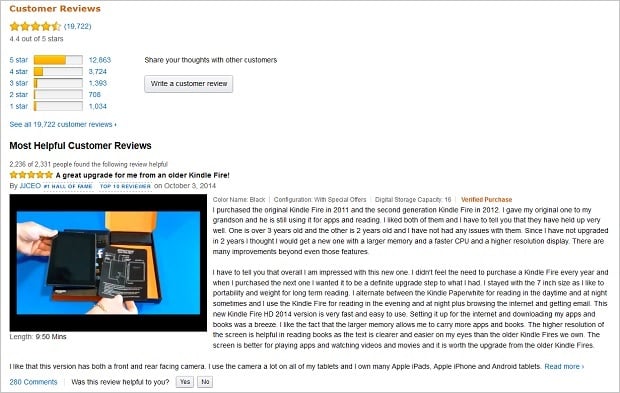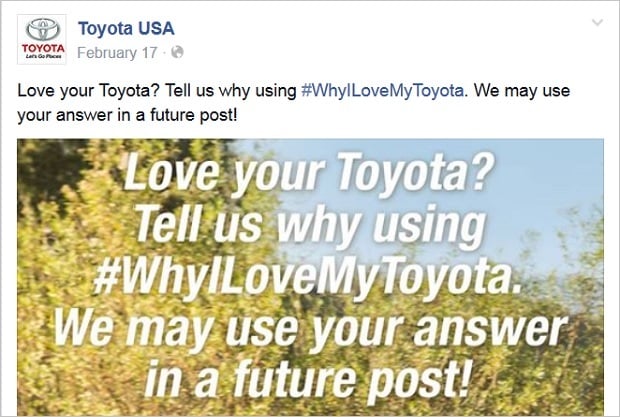5 Ways to Build Up Your Brand with Brand Advocates
Today more and more companies are not just focused on sales and good ROI, they tend to create an emotional connection with their customers and build their relationships by engaging customers into company’s inner culture. If the brand succeeds in that, customers become a part of the company’s team and may stand out as brand advocates.

Who Are Brand Advocates?
Brand advocates are that kind of consumers who not just get, but are ready to give. In general sense, these can be customers, employees, family members or friends. Those people usually share the brand’s corporate culture, mission and value and willingly contribute to make your brand more open and closer to customers.
Ted Rubin, one of the most renowned social marketing strategists calls relations between brands and their customers one of the cornerstones of a great marketing. His term Return of Relationships (ROR) includes the value a brand gets through establishing deep and trust-based relationships with it customers. In modern world such non-material signs of a brand’s reliability in most cases cost more than money you pay for advertisement.
Amazon Reviews
Unlike ROI, such policy is more customer-oriented and pays a lot to both sides of the process. Customers get high-quality products or services they wish to boast their friends, while brands get potential customers without paying extra money for advertisement. Thus, brand advocates can be the marketing power that helps you build up your brand with little investments but high in return.
A Bit of Statistics
Studies show that trust to brand advocates has grown in recent years. Thus, Nielsen’s 2012 Global Trust in Advertising report showed that 92% of 28,000 Internet respondents in 56 countries tend to trust their friends and relatives’ recommendations more than other forms of advertising. Consumer reviews come second in gaining trust of 70% of online respondents.
Another survey conducted by BrightLocal last year revealed that 88% of local business customers read online reviews. The most common business types where customers trust online consumer reviews are restaurants or cafes, doctors (particularly dentists) and clothes shops.
It’s a pretty logical step in today’s buying behavior of most people. The number of reviews increases year after year what makes purchasing decision for most people an easy thing. People trust advertisements less along with celebrities and corporate news. They are to rely more on opinion of average buyers who already tried and tested the product. According to the same study of BrightLocal, customers in general read 6 to 10 reviews before making a purchase decision.
Another vital observation is that a “word of mouth” is still one of the most popular ways of recommending a product or service to others. Such famous online review sites like Yelp or TripAdvisor today lose their positions and give the way to more personalized reviews on Facebook and Twitter. This way is considered to be less formal and more trustful what makes it a great means for business owners who wish to establish closer relationship with their customers.
Power of Word of Mouth
Word of mouth is the powerful source that can bring you customers in the most natural way. The truth is that people love to talk and they particularly love to talk about products or services they use on a regular basis. When they are not happy with a purchase or service, they need to get rid of that sense of discomfort, so they speak out about what they didn’t like about the product. And vice versa, when people are satisfied with the product, they wish to share that feeling with others.
BeccaLudlum Twitter
Marketing strategy that uses word of mouth is aimed at making people talk more (in a positive way) about your business and make it easier to share their opinion. It takes marketing on a higher level making it more open to consumers and more focused on delivering really high-quality products and services. Because real brand advocates won’t lie about your restaurant or clothes shop. If the clothes quality or food taste is bad – they will say it out loud. And it won’t be easy to dry-clean your reputation.
Brand Advocacy Principles and Tricks
When you decide to get advantages of brand advocacy, you should establish a proper strategy that allows you to identify your potential advocates, engage them to collaboration and define rewards that your advocates will get.
1. Define Your Community
First, you should research your community and find out people who can become loyal brand advocates to your business. If we speak about Internet, you should take a closer look at your social media followers and define people who speak about your brand often and do it in a positive way. Keep track on those potential brand advocates and engage with them. Learn what makes those people happy about your products or services and try to keep up with that level.
There are plenty of various tools that allow you monitoring activity of people connected with your brand. They help you to get info about social sharing and mentions of your brand across the Web. The most useful and popular are the following:
- Followerwonk. This Moz’ service helps tracking your followers activity, location and general interests. It allows you to easily compare accounts and organize your followers into various groups to provide them the best experience;
- ReFollow. It allows you to find the audience right for you and manage your relationships with it the most useful and effective way. Check out your Twitter followers, identify potential advocates and get insights on how to engage them;
- Klout. It’s the most known tool for tracking your social media activity, monitoring followers’ actions connected with your brand and finding the great content for sharing. It also offers suggestions on Twitter accounts to follow;
- BuzzSumo. It is a great tool for finding what content works better for various audiences and monitoring influencers that can make a real impact on your business;
- Twitalyzer. Twitter-focused tool that offers a one-click access to all metrics available on Twitter today. It combines basic metrics from Klout, Twitter and its own surveys to give you the best data on your followers’ demographic and shows your Twitter impact and engagement score in real time.
2. Present Your Brand’s Values
Make sure that your brand is open to your customers and provides the deepest insights on its corporate culture and values. If you run a corporate blog, offer your users the best content and encourage your followers to share it and leave comments.
Your company or brand’s values should be clear and easy-to-understand for your audience. And your content on blog, social accounts or other medial should promote those values. Make your content inspiring to establish an emotional connection between your brand and your audience. Thus, you offer your potential advocates an opportunity of talking about you, leaving reviews on your products or services, and testimonials that positively influence your brand’s reputation and awareness.
3. Ask People to Speak Out
BrightLocal’s survey shows that about 9% of customers will gladly leave their reviews if they are asked by a company. Thus, if you send an email to 100 of your customers after purchase asking them to leave a feedback about the product, 10 of 100 might give it to you. Despite the fact that most review sites (like Yelp) are against such method, it proves itself to be a really effective way of getting more feedback from customers.
Brand advocates like talking and being heard. So you should make sure their word will be spread around and presented to the widest community. So don’t forget to share their brightest thoughts through your social accounts, make the best comments visible, answer their comments and questions about your products.
Toyota USA – Facebook
4. Offer Reward
Of course, when we speak about rewarding brand advocates that doesn’t mean we should actually pay them with money. It neutralizes the whole idea of brand advocacy. But they definitely should be treated and rewarded higher than your average customers.
Brand advocates usually already like your products or services. So they should be rewarded a bit more and in some other way to keep their satisfaction level high and improve engagement. There can be various virtual and material rewards like:
- Badges or Certificates they can display on their blog or social media accounts;
- Various discounted offerings;
- Special treatment at events or on your corporate blog (e.g. feature them as experts for your service or product or offer them exclusive sneak-peeks of your working process);
- Let advocates test your new products first and feature their reviews on your website and social media accounts;
- Offer them exclusive giveaway of your product they can share with their audience;
- Exclusive T-shirts (not just average stuff with your logo on it), or other products that emphasize advocate’s contribution to your brand;
- Links to their posts, profiles etc. on your blog articles or news.
There can be even more ways of rewarding your brand advocates. Many brands introduce a special “Refer a Friend” program where they encourage users sharing their knowledge of their products or services. It can be special offers or discounts users will be glad to share with their friends and relatives. Make sure those offers are of the highest quality.
5. Let People Talk About Themselves
People love talking about things. But even more they love talking about themselves. Cultivate this trait in your customers. Let your social media accounts be about them: offer them a platform they can express themselves, speak out about their interests and expectations from your brand.
In the strategy of ROR we don’t have to advertise, we have to build relationships with our users. Your marketing goal shouldn’t be your needs, you should more focus on what your customer needs and satisfy his needs in the best way. In such case you’ll get loyal brand advocates.







Leave a Reply